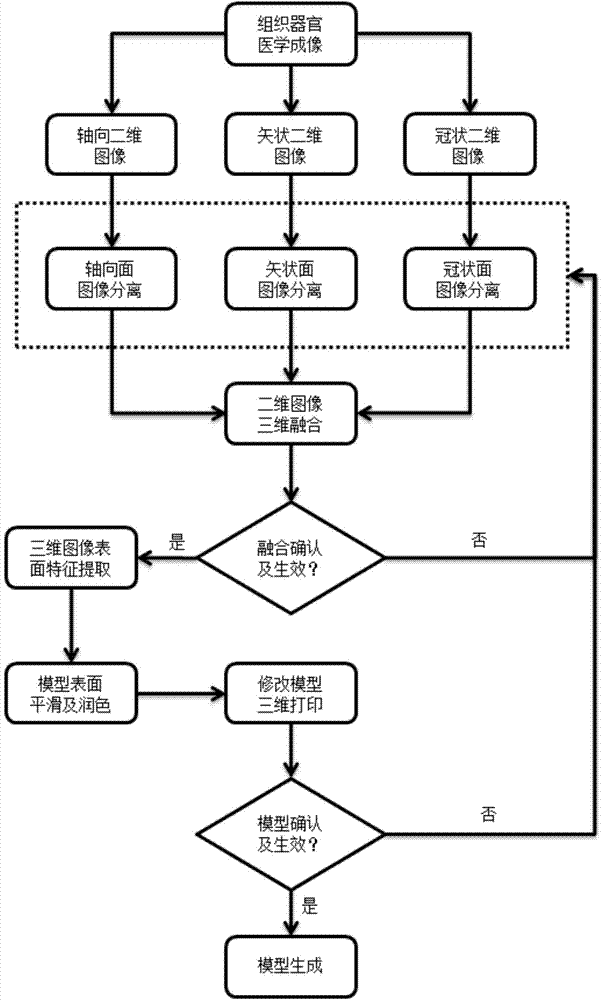Human organ three dimensional (3D) modeling method capable of performing 3D printing
A technology of human organs and 3D modeling, applied in the field of 3D modeling, it can solve problems such as staying in software simulation, and achieve the effect of realistic surface features
- Summary
- Abstract
- Description
- Claims
- Application Information
AI Technical Summary
Problems solved by technology
Method used
Image
Examples
Embodiment Construction
[0024] A three-dimensional modeling method of a human organ capable of 3D printing according to the present invention will be described in detail below with reference to the embodiments and the accompanying drawings.
[0025] Such as figure 1 Shown, a kind of three-dimensional modeling method of the human body organ that can carry out 3D printing of the present invention comprises the following steps:
[0026] 1) Obtain medical images of tissues and organs,
[0027] The medical images of tissues and organs are obtained and stored as image files in DICOM format by means of nuclear magnetic resonance or ultrasonic scanning; wherein,
[0028] NMR:
[0029] Taking the Siemens 3T scanning device as an example, the coronal, sagittal, and axial scans are performed on the whole body of the human body or a single organ. The accuracy of each layer is 1.1×1.1mm, and the thickness of the layer is 3mm. Scanned images of human organs, which are stored in DICOM format. This method has no...
PUM
 Login to View More
Login to View More Abstract
Description
Claims
Application Information
 Login to View More
Login to View More - R&D
- Intellectual Property
- Life Sciences
- Materials
- Tech Scout
- Unparalleled Data Quality
- Higher Quality Content
- 60% Fewer Hallucinations
Browse by: Latest US Patents, China's latest patents, Technical Efficacy Thesaurus, Application Domain, Technology Topic, Popular Technical Reports.
© 2025 PatSnap. All rights reserved.Legal|Privacy policy|Modern Slavery Act Transparency Statement|Sitemap|About US| Contact US: help@patsnap.com

